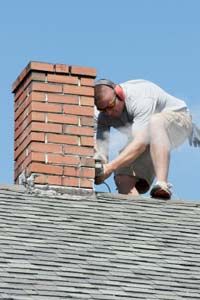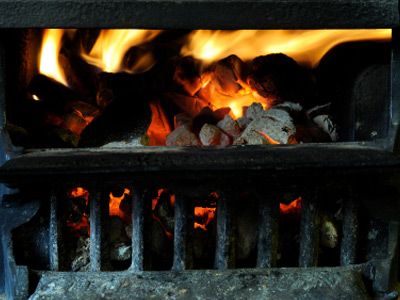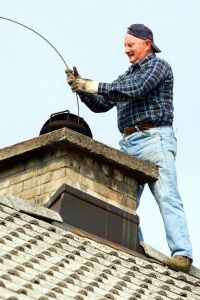You rely on your chimney to channel smoke up and out, but when the chimney's outside or inside walls crack, you may have serious problems. Mortar joints between stone or bricks are likely to flake, wash out or crack after 25 or 30 years of exposure [source: Cornerstone Chimney].
What causes these cracks? The freeze-thaw action of colder climates is usually the culprit. Moisture can make its way into the masonry, damaging it and any attached object made of metal like a lightning rod or satellite dish [source: Cooley].
Advertisement
The risk of damage to your chimney increases if you live in an historic home. Before the use of natural gas or oil for heat, coal was used. Chimneys built to accommodate the high heat of burning coal that powered boilers are oversized and too cool for oil or natural gas conditions. This kind of chimney can lead to greater risk of condensation and resulting damage. The topmost area of the interior walls of the chimney are the most vulnerable, as well as being the most difficult to notice unless you spend time on your roof. Unfortunately, neglect and lack of inspection often lead to the need for major repairs [source: Cooley].
Your home's location may also increase your chimney's risk of damage. For example, about 50 percent of houses affected by Seattle's 6.8 Nisqually Earthquake, which occurred in 2001, sustained chimney damage. Because chimneys are essentially rigid, they don't move with a quake, as a wood-framed house can do. Damaged chimneys can allow toxic gases such as carbon monoxide to leak into your house, creating a serious health hazard [source: Perkins].
Be sure to check the chimney at least every one or two years for damage. You'll want to scour the area for missing or loose flashing -- the metal sheeting that keeps watertight the place where the roof and chimney meet -- and any signs of damage to the masonry, especially cracking [source: Lipford]. Remember that serious problems need the attention of a professional; not all repairs can or should be done by an amateur. And, many communities require a permit for chimney work.
If you find a problem spot on inspection of your chimney, read on for more instructions.
Advertisement



